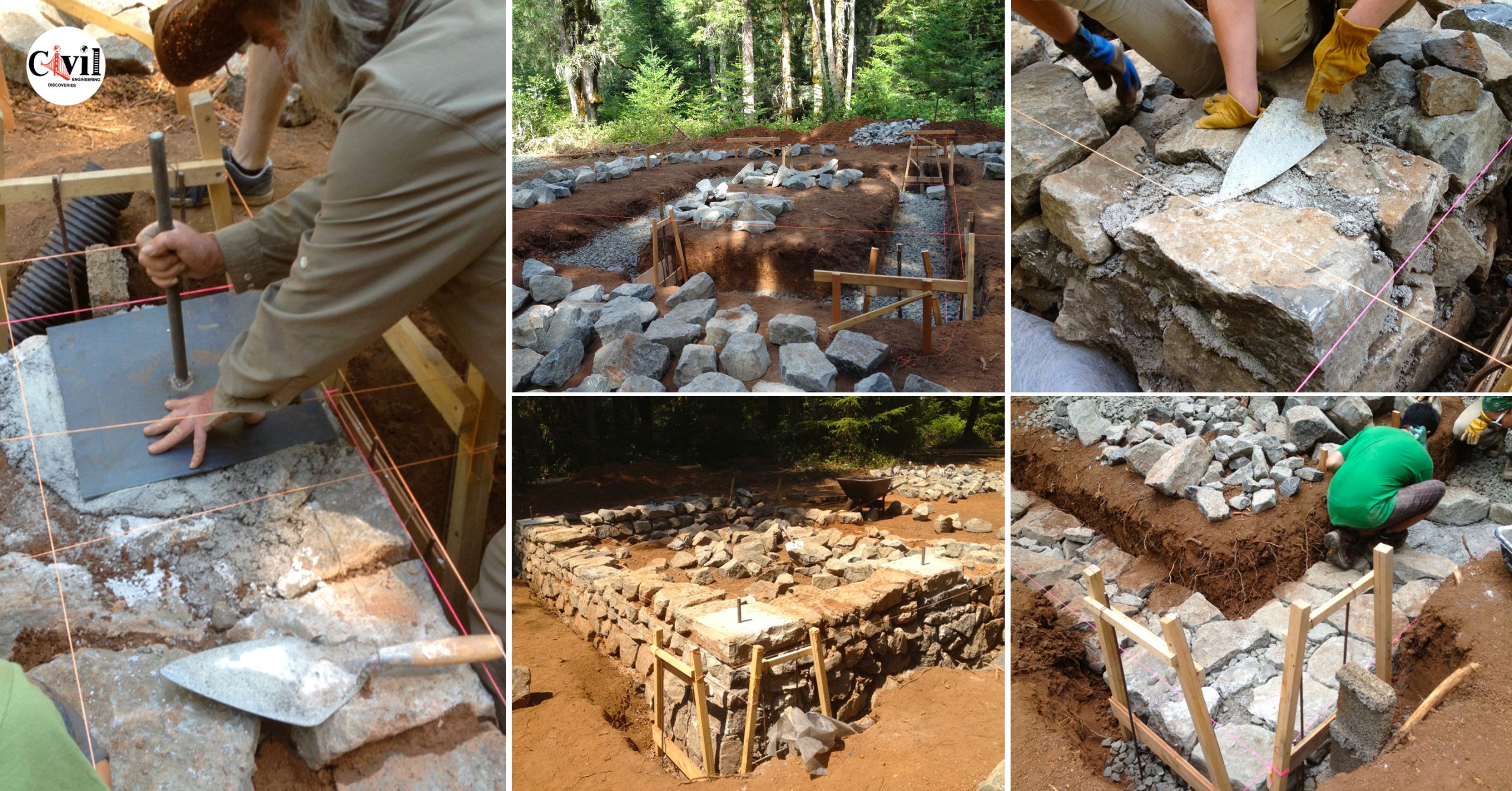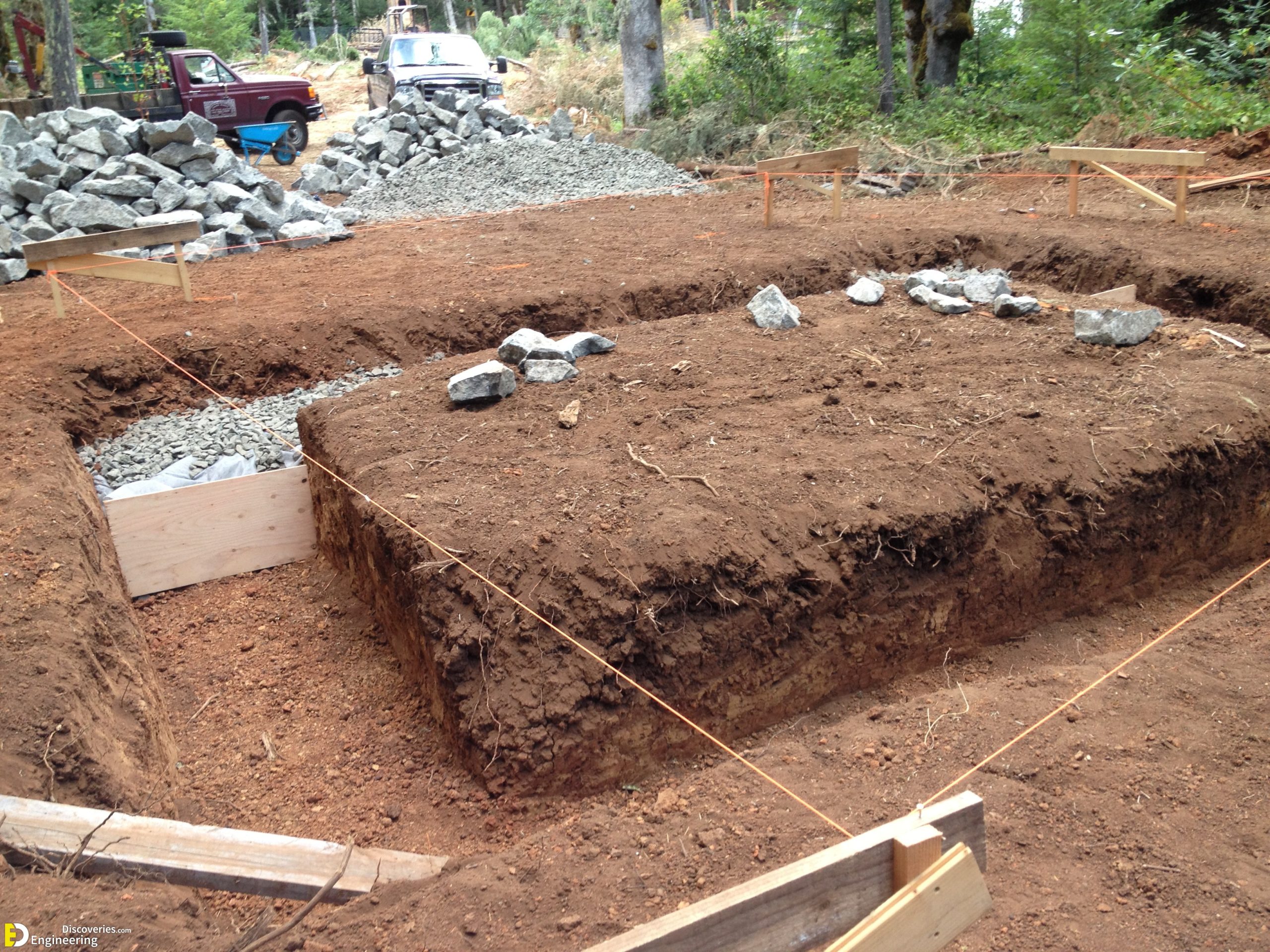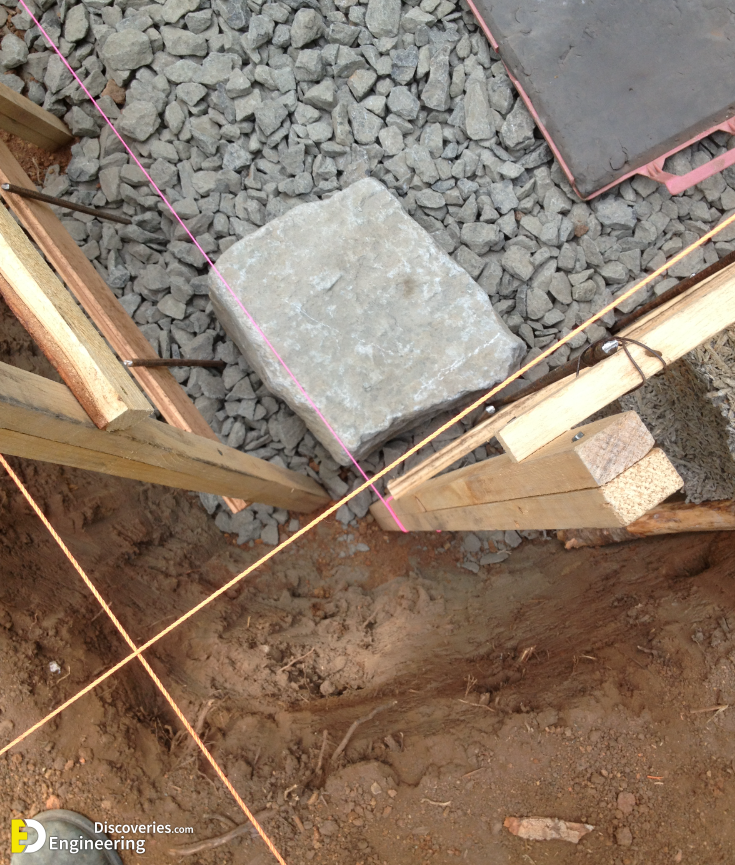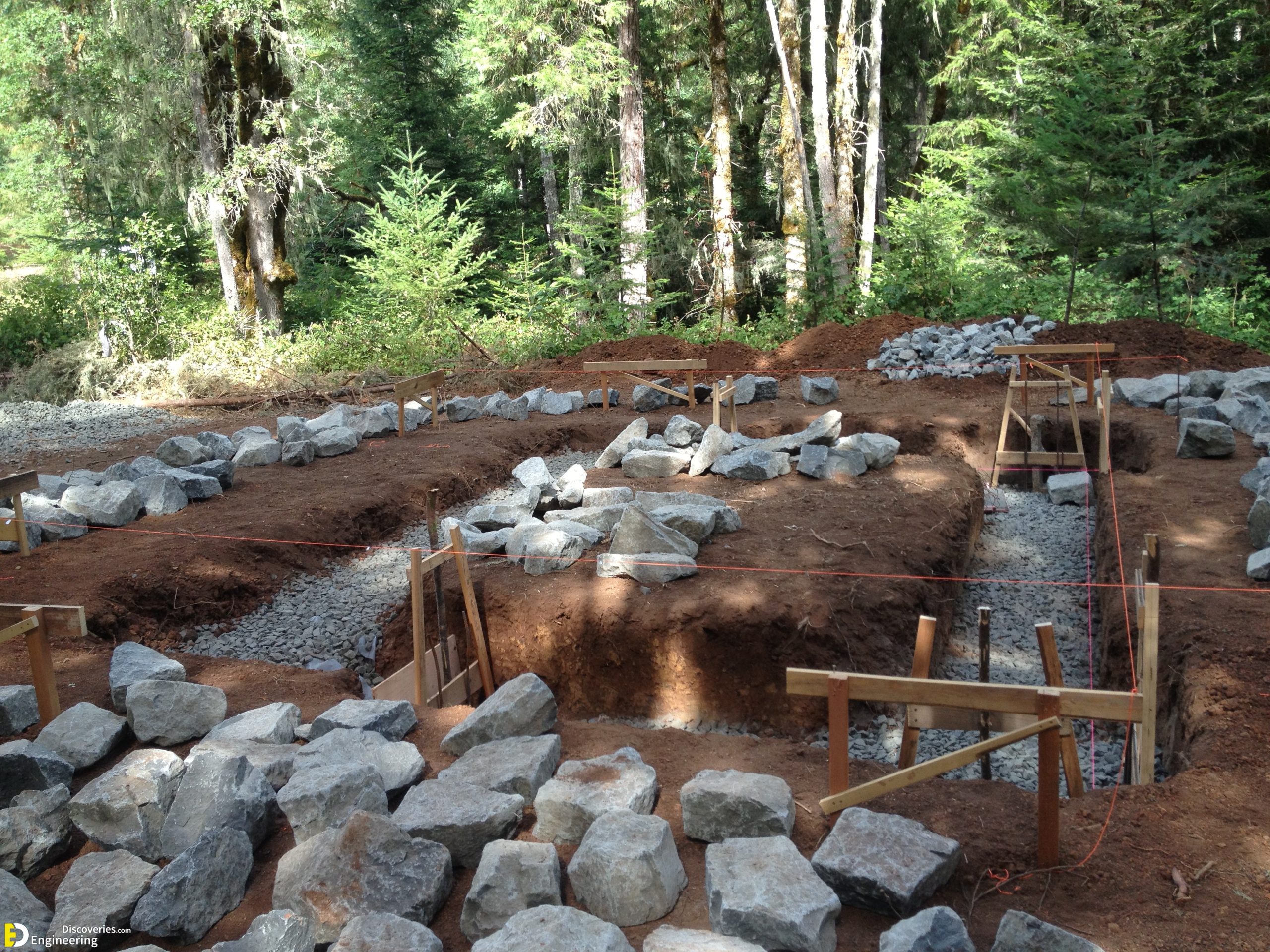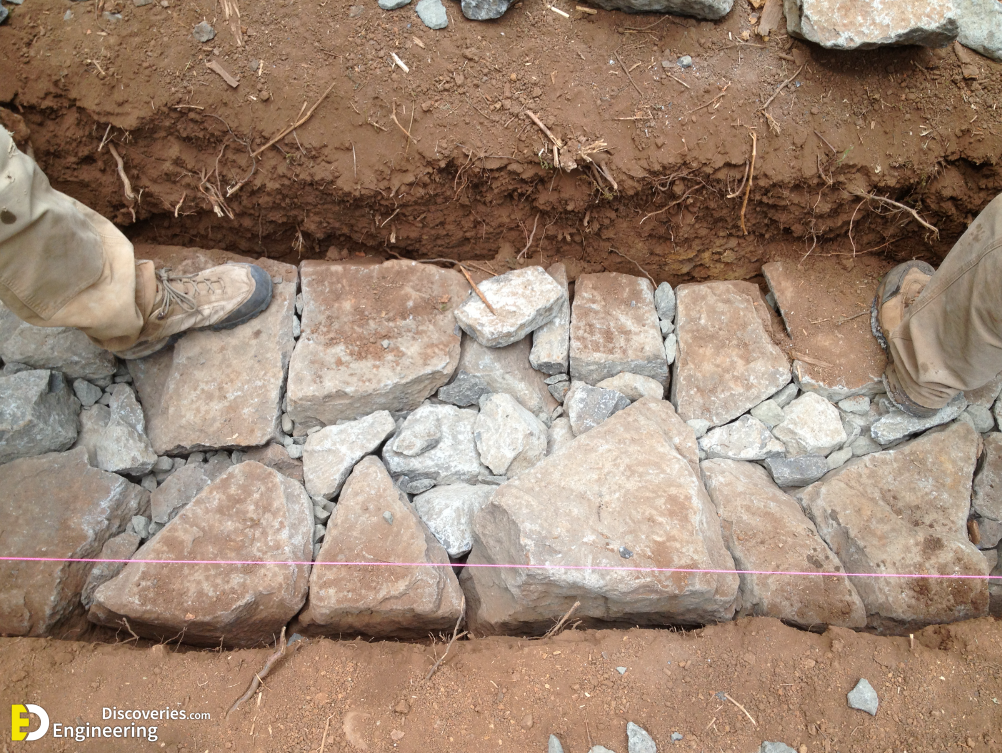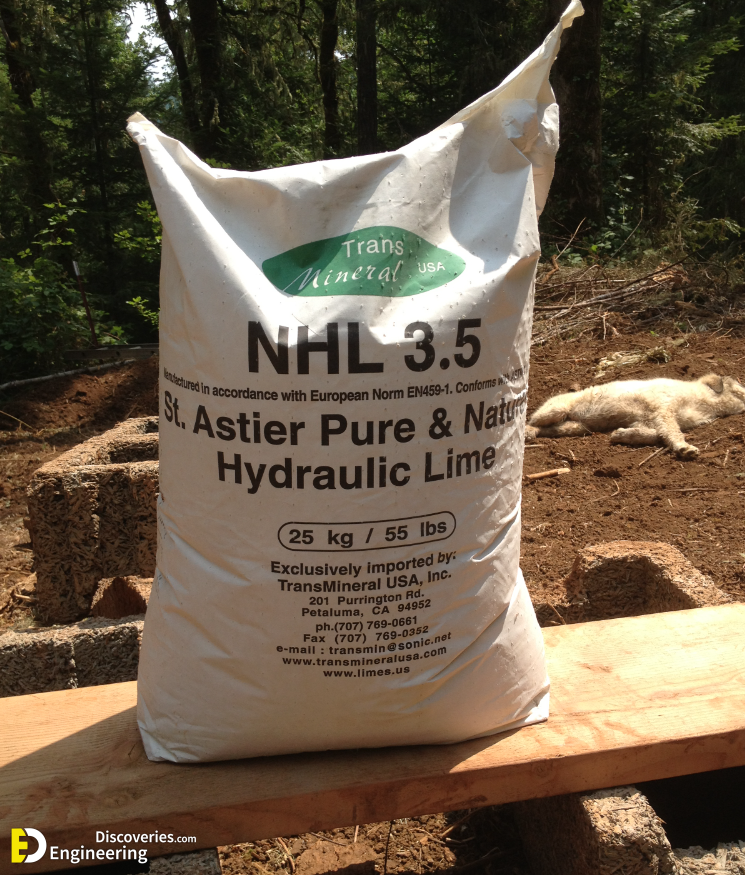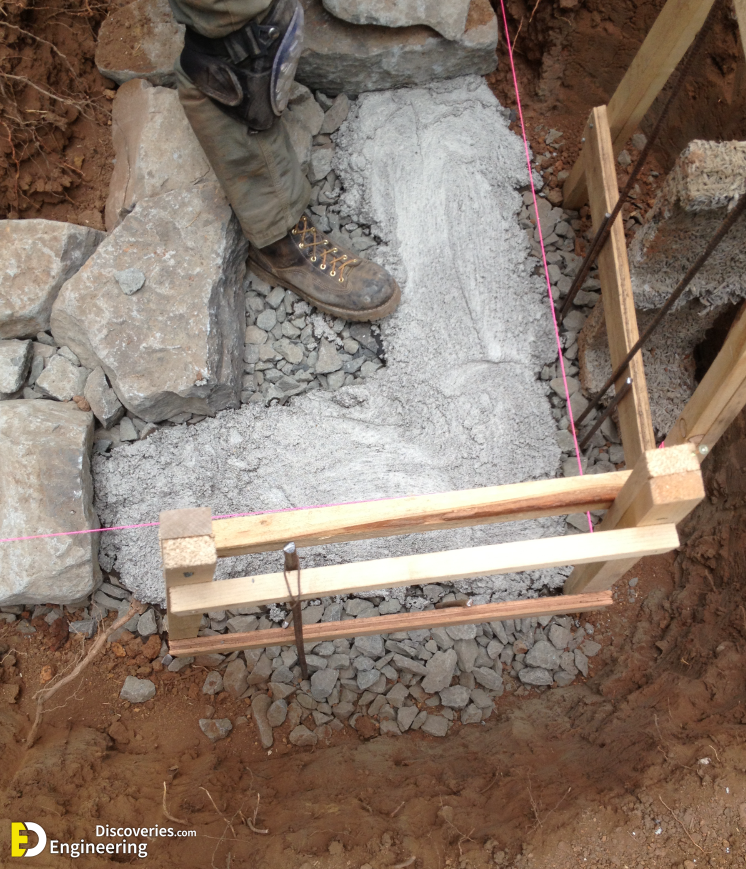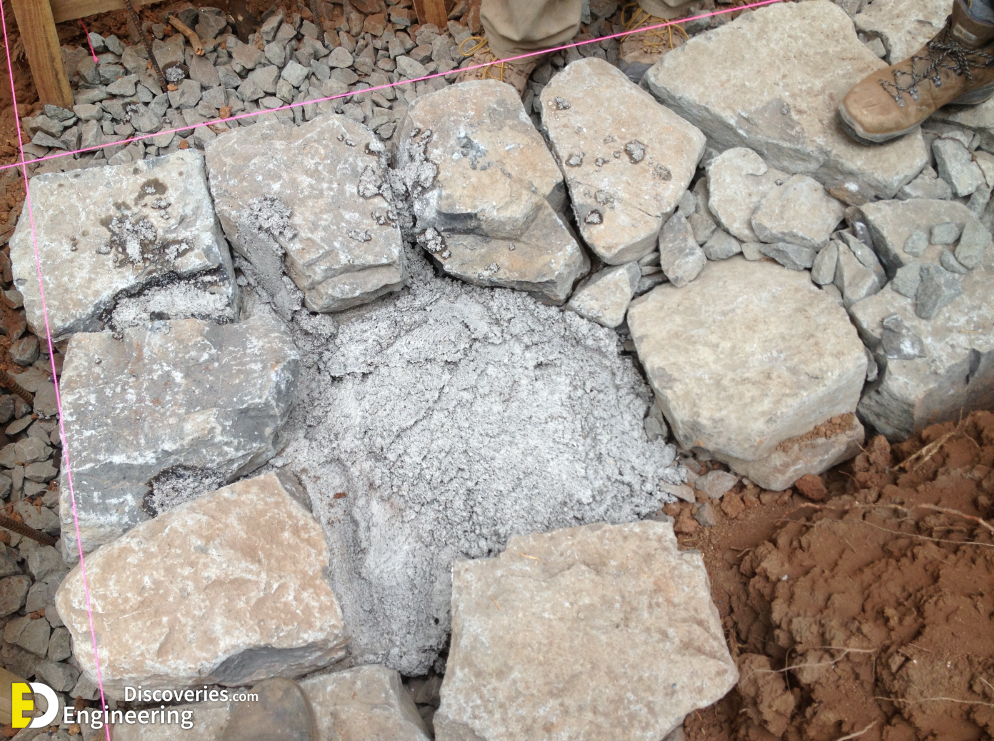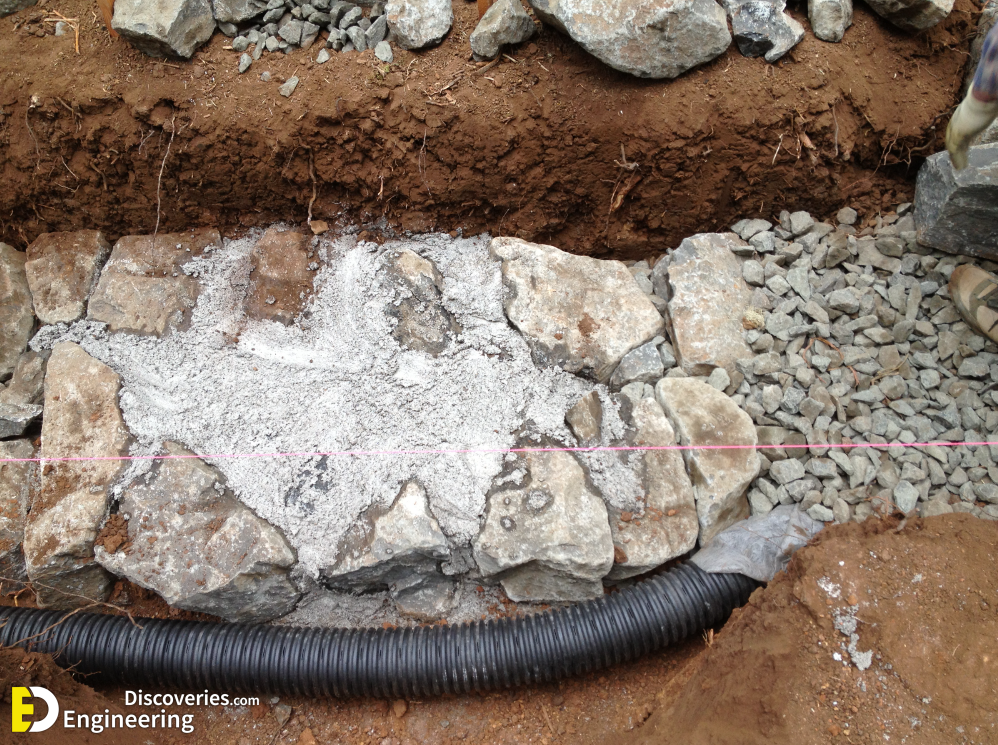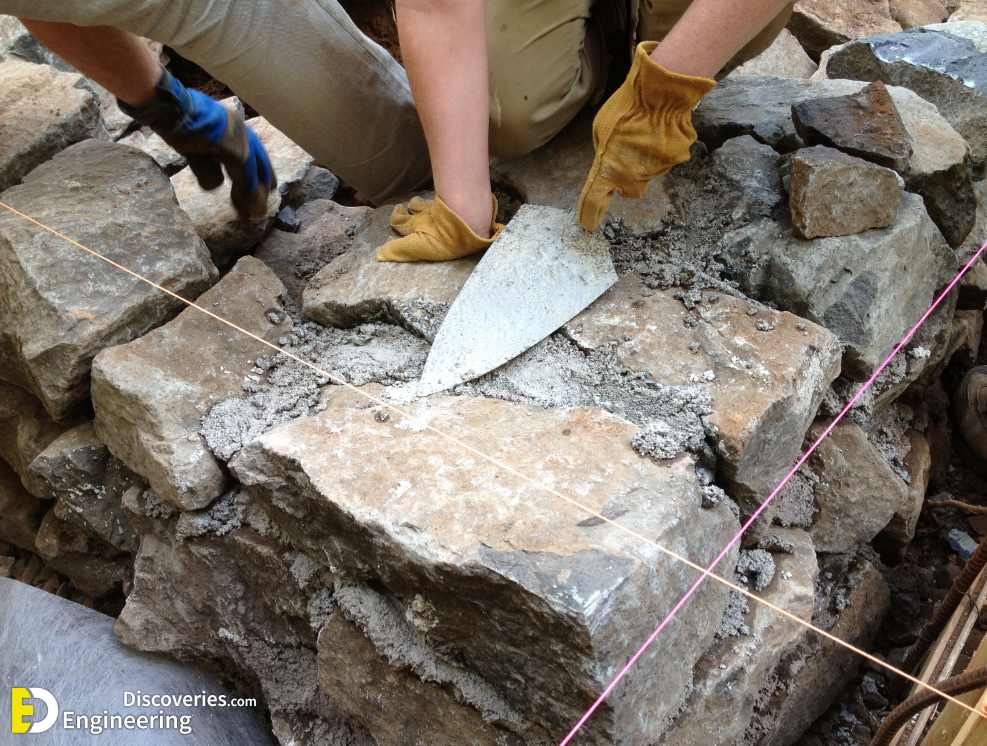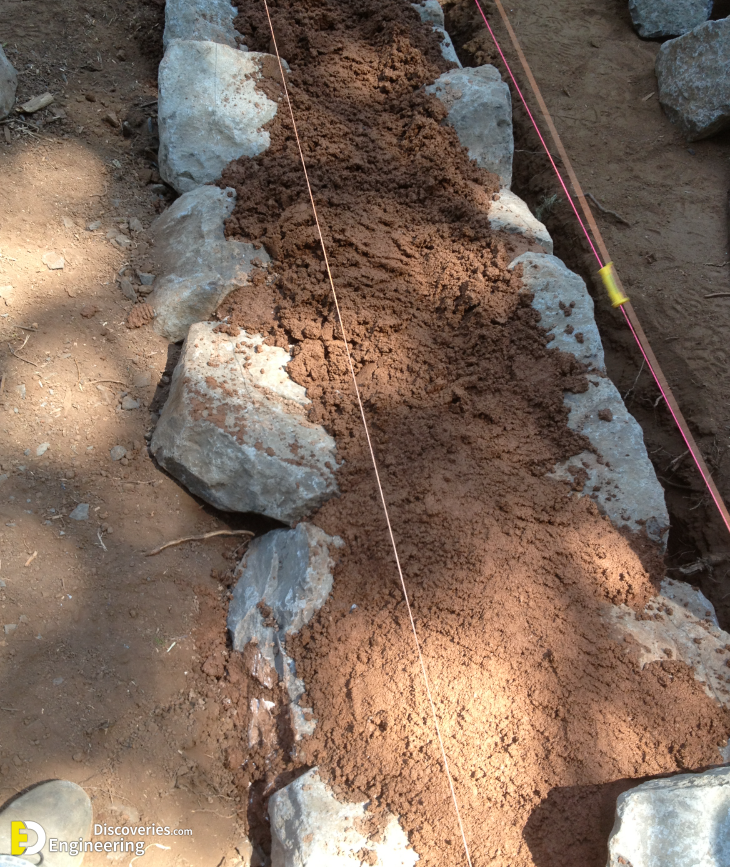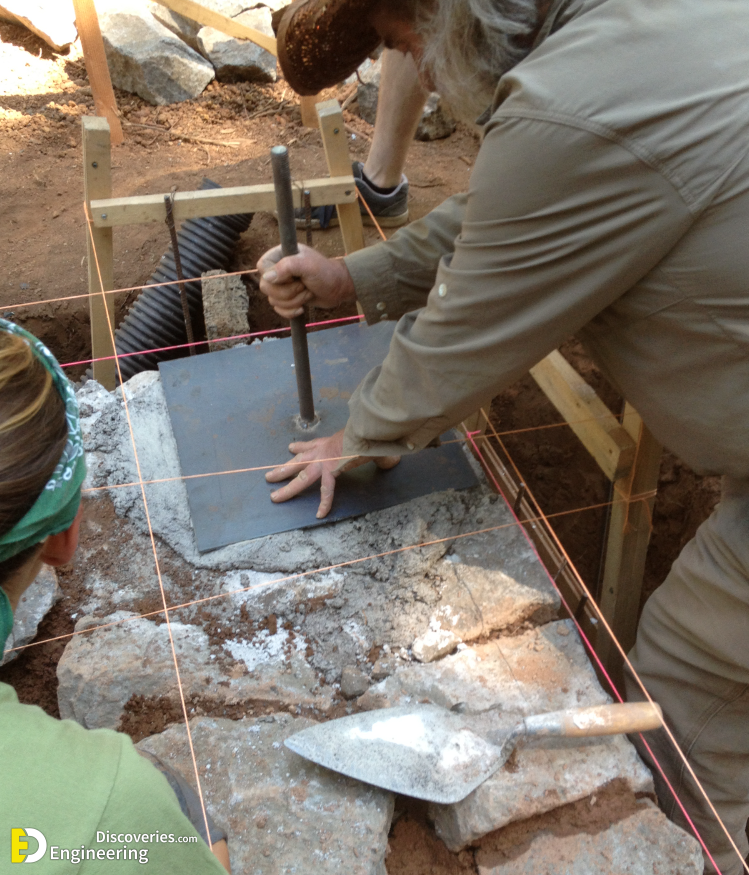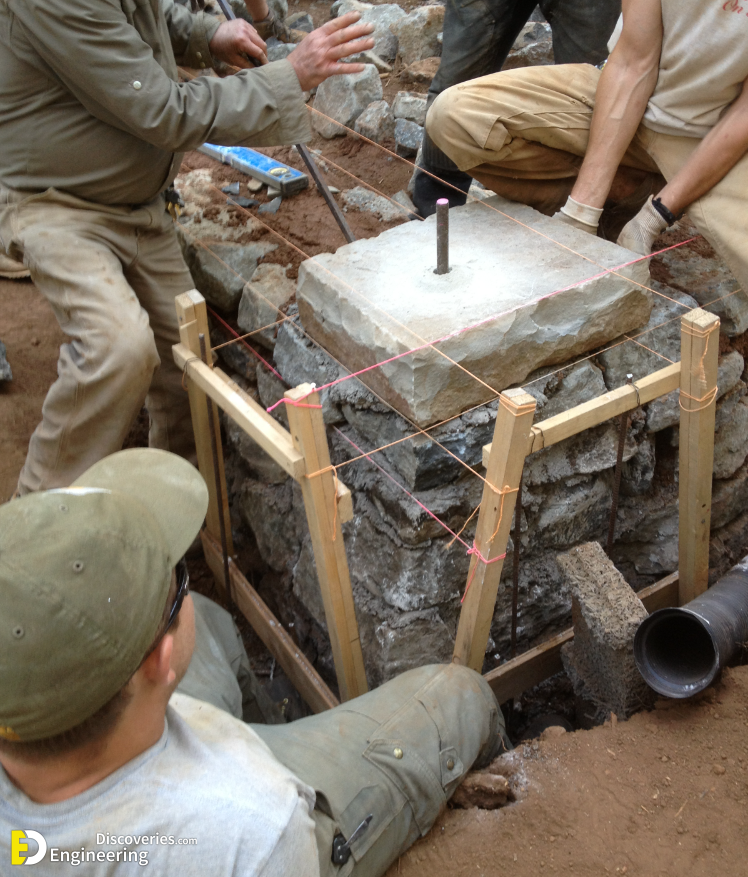A building needs a strong foundation to rest upon. This is the first detail to consider when building any structure. It should be a suitable and stable base for your building to sit upon, and must also support the load of the building.
1. Site Preparation
- Clear a level pad for your building. Make it at least 3 feet bigger than the size of your building on all sides so that you have room to maneuver about the site.
- Set up, batter boards. These allow you to run string lines for the outside and inside of your foundation trench. Always use a line level to level these strings.
- Make sure that your foundation is “square” by using the Pythagorean theorem.
- Dig your foundation trench down to the frost line (depending on where you are). Make the sides of your trench vertical, square on the sides, and tamp down the bottom.
- Determine your drainage point, and make the bottom of your trench slope down to where the water will drain out. A standard good practice is to have it slope down ¼ inch per foot (1 inch per 4 feet). This is pretty slight. Use either a transit or a water level to do this part. The Egyptians used water levels to level the pyramids so don’t be turned off by this ancient tool. It works just as well as a transit for this job. Just make sure that there are no bubbles in it.
2. Rubble Trench and Drainage Pipe
- Lay down a few inches of gravel on the bottom of your trench and tamp it down. Use drain-grade gravel.
- Use landscaping fabric to cover the bottom and the sides of the rest of the trench surfaces. Leave enough on top so that you can wrap it back over the top when you’re done.
- You typically want to start your stone foundation or stem wall about 6” below grade. So measure down from the top of your trench about 6”. This will be where your rubble trench ends.
- Fill about 1/3 of your trench with drainage gravel again. Now filling over the top of your landscaping fabric.
- Lay in your perforated drainage pipe on top of this layer of gravel. Make sure that it is leading out to your drainage point.
- Fill in the rest of your trench with gravel and cover the drainage pipe, but leave an extra 2” free for now. (Remember to keep 6” of space below grade to start your stem wall foundation too.) So leave about 8” free of gravel at this point.
- Cover the landscaping fabric over the top of the gravel, making a “burrito” of sorts. Cover this with another 2” of drainage gravel all around.
- Tamp your gravel inside the trench.
- Begin your stone foundation or stem wall.
3. Stone Laying
- Grade your stone – sort out the stones by size. The larger rocks will go on the bottom of your foundation. Also, pick out cornerstones with a nice 90-degree angle, and mark these with a big X.
- Set up your next set of tapered batter boards. You need to build these according to your structure. The top surface of rock foundation walls should be NO LESS than 16 inches wide. The minimum height of a stem wall above grade should also be 18 inches. Our batters moved in 2” per each foot upward in height.
- Lay your cornerstones for the first layer and start from there.
- Lay the exterior layer first. You will probably have one interior and exterior layer of stones for your foundation.
- Always lay your stones lengthwise into the wall! This is important in order for your foundation to last a long time.
- Lay your stones so that the “face” that you want is showing on the outside of your foundation wall. Try to use faces that have a slight upward slope to them. This will help shape your wall nicely.
- You want all of your stones to have contact. They all need to touch!
- Insert “hearting” in between your large stones. This is a critical step! Hearting is just smaller stones or gravel to help support the large stones and fill in the gaps. Use your “waste” rock for this. Try to insert one bigger rock and then some smaller ones. When adding hearting, always lay it in from the inside of the stone wall, and don’t put it in from the exterior of the wall. This prevents them from wedging out over time. Also, don’t force the heart in. You don’t want to disturb your large stones’ positions.
- Lay the interior layer of stones now. Use the stones without a good shape or face for your inside layers since these won’t be seen.
- For “static” stone laying, you will lay one layer of stones at a time. For each layer, lay a string line by attaching it to two opposite tapered batter boards. This will help guide you up to the right slope as well.
- Follow the 1 over 2 rule. Lay one stone to cover the break between the two stones below it. This is called “breaking the joint.”
4. Mortaring
- If you’re mortaring your stones together, lift up the stones and place them aside. Keep them in the same direction so that you know how they should go back in place.
- Lay your mortar down where your stone will sit.
- Place your stones back in place on top of the mortar.
- Re-insert your hearting, and add new hearting inside of the mortar if needed.
- We used Natural Hydraulic Lime mortar on this structure. You can also use cement mortar if you choose. NHL is best for mortaring stones underground as it sets in water. It is harder to come by than cement mortar and costs a lot more though. If you’re on the East coast, you can get NHL and lime putty through Virginia Lime Works.
- This is a potentially good recipe for lime mortar: Use 3 parts sand to 1 part NHL. The amount of water can vary, but it will be about ½ part water. We tested the sand that we were using for voids as well as gradation and that’s how we came up with the 3-1 formula. Often it can be 2.5,1, or even less though.
- A good recipe for a clay/lime mortar is: 6 parts sand, 1 & ½ parts sifted clay, ½ parts lime putty, and about 1 part water. (Add the water and lime first.) This is the mortar to only be used on the above-grade part of the wall.
That basically sums up what we did and how to build a stone foundation for your cob house or any other manner of building you might be envisioning.
Click Here To See How To Install Stone Veneer Over A Concrete Wall Step By Step

